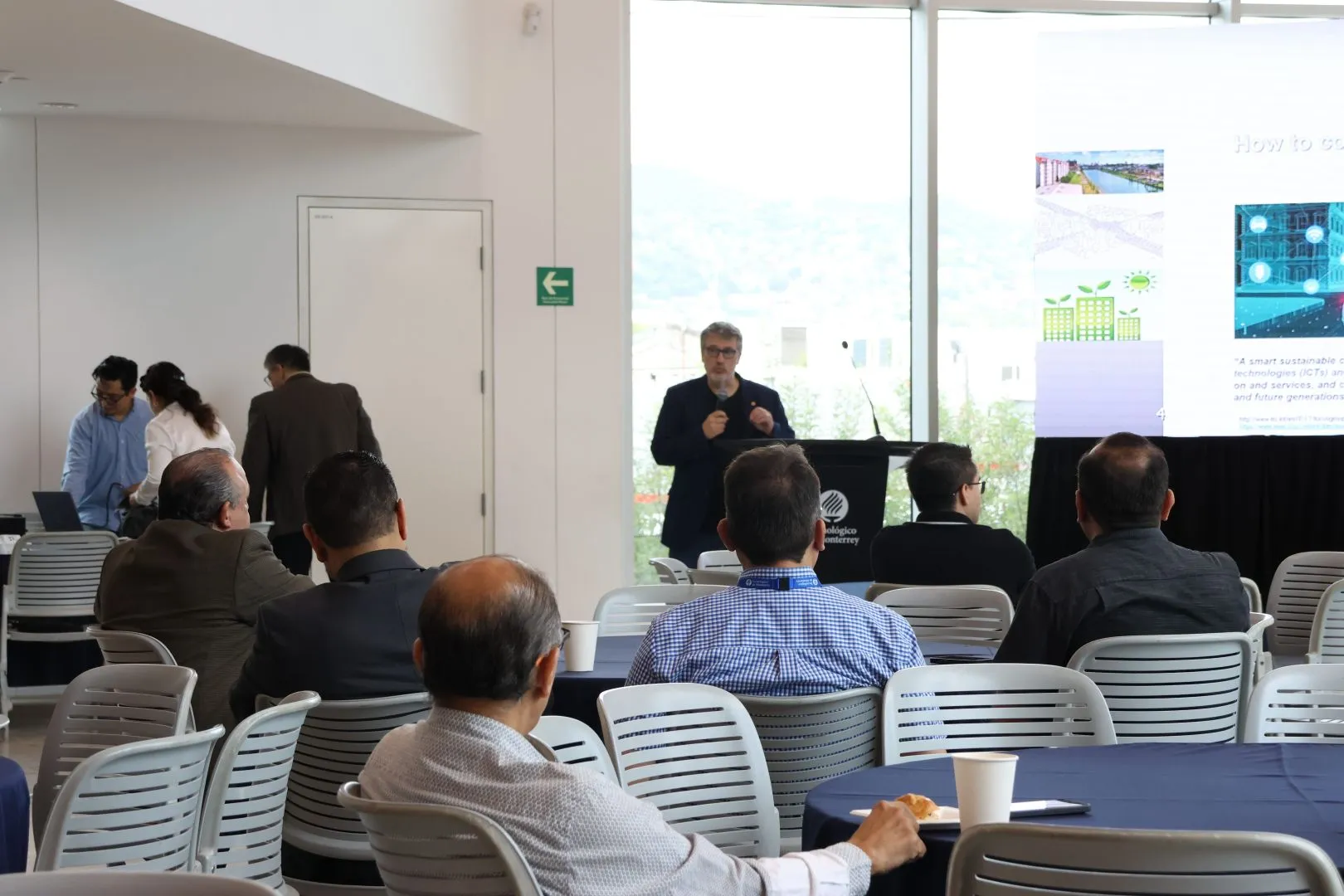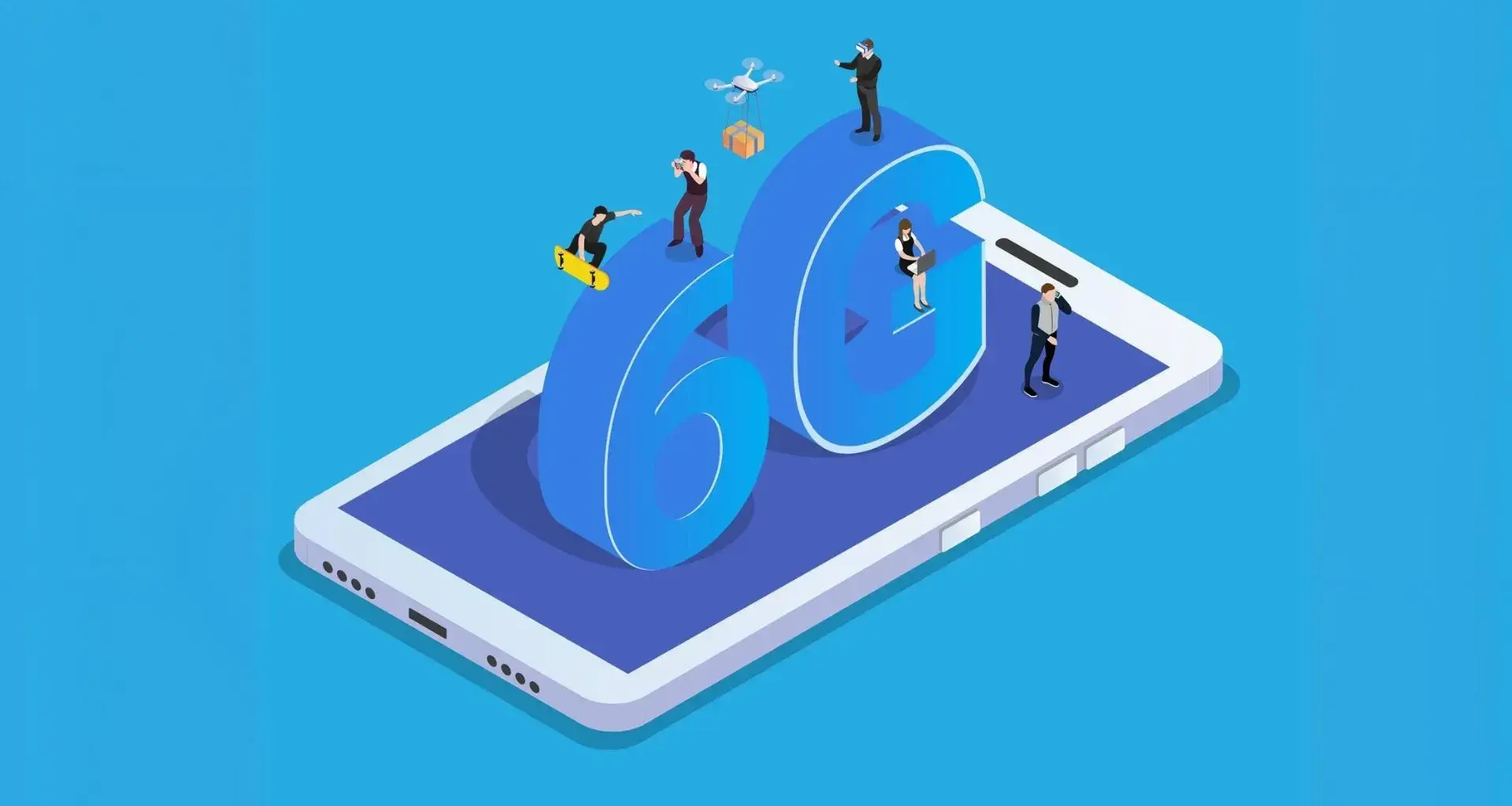An internet that doesn’t just connect but also “senses, locates, and takes action”: this is how 6G, the technology that will set the pace for the next decade, is shaping up.
So says Dr. Francisco Falcone Lanas, a telecommunications expert and Faculty of Excellence professor at the Tec.
The academic delved into 6G’s strategic role to enable solutions to global challenges during a symposium that brought together professors, researchers, students, and industry representatives.
Falcone said that 6G connectivity won’t just be a technological advancement, but a platform that will change the way we live, work, and interact with our environment.
“6G offers connectivity and processing capabilities for improving healthcare systems with predictive and proactivesystems,” he explained.

Evolving toward ultra-fast, user-centric connectivity
Falcone described 6G as the natural evolution of 5G, a network combining greater bandwidth, greater device capacity, and a high degree of interactivity.
According to the expert, this generation entails a spectrum shift, with artificial intelligence agents that autonomouslymanage processes and the use of terahertz (THz) frequencies, which will enable ultra-fast communications.
He emphasized that it will be a user-centric network, unlike previous technologies, designed to respond to social needs.
One of its innovations will be three-dimensional coverage, capable of guaranteeing connection at different heights, which will overcome the limitations of current two-dimensional networks.
With regard to security, Falcone emphasized that 6G will offer comprehensive protection, from the physical layer to data management, raising digital trust and privacy standards.

The changes 6G will bring
One of the main challenges, Dr. Falcone explained, is the use of terahertz bands: although these allow for enormous transmission capacity, their high sensitivity to weather conditions complicates implementation.
In addition to this is the challenge of energy efficiency, which will require smaller, closer, and lower-power antennas, as well as optimized AI algorithms as current models are too resource-intensive.
In terms of benefits and opportunities, Dr. Falcone pointed to examples such as:
- The development of cognitive cities, capable not only of responding to events but also anticipating them.
- Boosting the industrial sector with hyperconnected factories, collaborative robots, and ultra-precision localization systems.
- Advances in molecular spectroscopy, which is crucial for the creation of new materials.
- In healthcare, the implementation of predictive and proactive systems that will improve medical care.
- Innovative sensors: from tooth-mounted devices and smart textiles to bandages that change color when a wound is healed.
- Immersive experiences: holographic communications and mixed reality that will transform social and work interactions.
“With 6G, the network doesn’t just connect: the network senses, locates, and takes action,” said Dr. Falcone.
Working from now on into the future
Tec de Monterrey is preparing for the arrival of 6G with the Advanced 6G Communications and Integrated Sensing Lab, a pioneering space in Latin America for studying and testing this technology.
Dr. Falcone explained that anticipating 6G is crucial to not being left behind over the next decade.
This technology is expected to be standardized by 2030 and commercially adopted around 2035.
Although implementation is still a decade away, this lab will allow companies, governments, and universities to take advantage of the opportunities this new network will bring, he said.
In addition to Dr. Falcone’s lecture, more than 40 attendees participated in a networking workshop led by Dr. César Vargas Rosales, a researcher at the School of Engineering & Sciences.
This workshop promoted the collaborative design of proposals for strategic sectors such as energy, water, healthcare, and transportation.
The objective was to share initiatives and concrete, actionable ideas in a collaboration between academia and industry to build a more connected, sustainable, and innovative future.
YOU MAY ALSO WANT TO READ:





